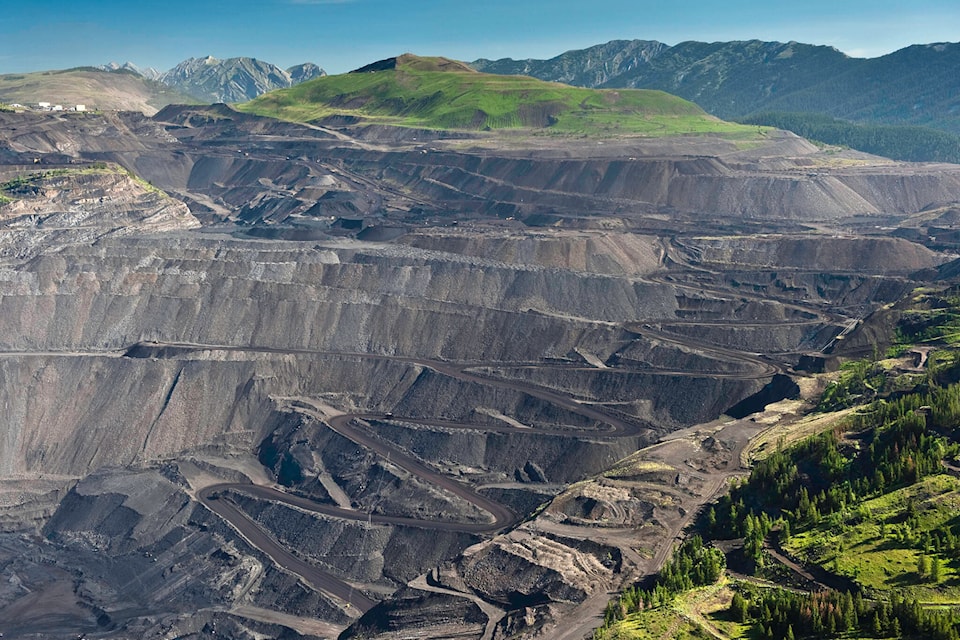A new report commissioned by Wildsight estimates it will cost billions in reclamation costs to address selenium concentrations in Canadian and U.S. waterways that stem from mining activities in the Elk Valley coal mines.
Completed by Burgess Environmental Ltd., an independent consulting firm, the report estimates that $6.4 billion will be needed to implement the water quality plan created by Teck Resources Ltd. to build water treatment plants by 2027 and operate them for 60 years.
“The $6.4 billion figure that Burgess Environmental has calculated is particularly concerning because it is vastly more than Teck’s $1.9 billion reclamation security is set at, meaning they’ve severely underplayed the problem and B.C. taxpayers stand to foot a multi-billion-dollar bill if anything goes wrong,” said Simon Wiebe, Mining Policy and Impacts Researcher at Wildsight, in a press release.
Reclamation security is a BC government policy mandating that mining companies must provide financial assurance, such as through bonds, to the province in order to cover environmental reclamation and remediation costs.
“Our report calculates only the cost of remediating part of the selenium contamination in the Kootenay/ai watershed from the Elk Valley mines,” Wiebe said. “The true cost of cleaning up environmental damage from these mines will be far greater once land reclamation, groundwater remediation, treatment of other water contaminants, and monitoring are taken into account.”
“This report is strong evidence that the amount held by British Columbia is not going to be nearly enough to fix the selenium problem, let alone other environmental damage, and that must be rectified.”
In a statement, Teck disputed the reclamation estimates in the Burgess report, taking issue with aspects of how capital spend was included in the estimate, as well as “overstating” ongoing water treatment costs by upwards of 60 per cent.
“Teck meets all current bonding requirements as set out by the provincial government policy, and we are committed to meeting all reclamation obligations at no cost to government or taxpayers,” reads the statement. “Teck will have $1.9 billion for the Elk Valley Operations, as per the requirements and calculations under the BC Government policy.”
In a letter prefacing the Burgess Report, Gordon Johnson, president of Burgess Environmental Ltd., noted that Teck did not provide water treatment plan operational and maintenance cost figures. He also added that capital costs were included into the estimate as the province’s Chief Permitting Officer has the discretionary authority to exclude it from reclamation security.
According to the province’s Chief Inspector of Mines, the estimated reclamation liability for coal mining operations in the Elk Valley is $1.9 billion, with a total current bond amount of $1.4 billion.
The Burgess Report stated that selenium contamination in the Elk River originates from Teck’s mine operations in the Elk Valley, while also concluding that current company measures are not adequate for remediating selenium contamination.
Teck says it has invested $1.4 billion into water quality indicatives, which includes building four water treatment facilities that currently treat 77.5 million litres per day, removing “between 95% and 99% of selenium from treated water.”
The company says it is planning to build six additional water treatment facilities between now and 2027 that will cumulatively treat 150 million litres per day.
Wildsight expressed concern over the pending sale of Teck’s coal assets to Glencore, a Swiss-based mining company, a process that is currently winding through federal regulatory reviews. As part of the sale conditions, Glencore has committed to implementing the Elk Valley Water Quality Plan, which was approved by the B.C. government in 2014.
“We hope that both Glencore and the Canadian government will pay close attention to this report as they consider the sale, to ensure accountability for the selenium crisis is maintained throughout the transfer of ownership,” Wiebe said. “This is already an international environmental disaster, and it could still worsen.”
“Teck’s current strategy, which this report’s calculations are based on, would only remove half of the selenium produced by current mining operations. Moving forward, more and more waste rock will be produced, leading to more selenium being released, possibly requiring even more water treatment facilities.”
Concerns over water pollution in the Kootenay watershed have been acknowledged by the Canadian and American federal governments, which recently agreed to refer it to the International Joint Commission (IJC), which will study the issues over a two-year period and make non-binding recommendations.
The transboundary Ktunaxa Nation in the Columbia Basin have been advocating for a reference to the IJC for over a decade.
